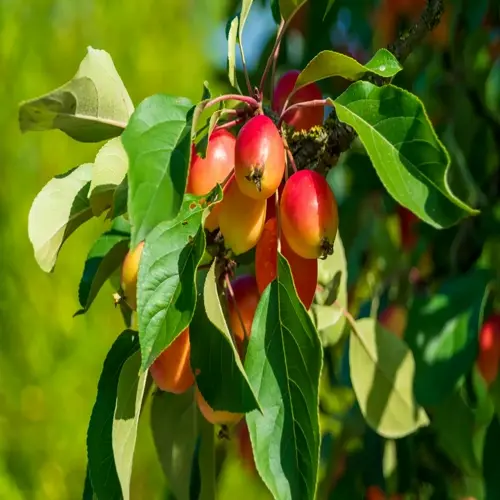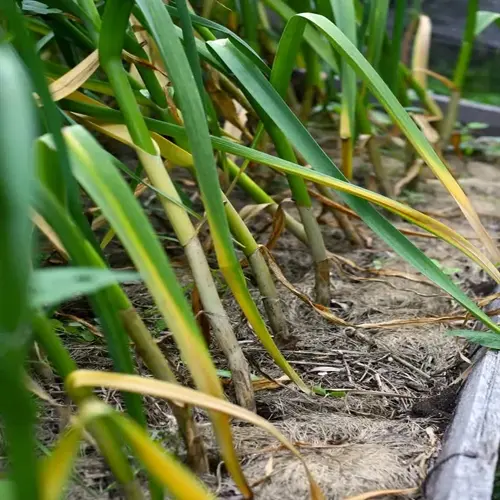When to Harvest Grapes: The Essential Guide

Written by
Kiana Okafor
Reviewed by
Prof. Martin Thorne, Ph.D.To know when to harvest grapes, use both sugar testing and an evaluation of visual ripeness cues.
On average, harvest in the northern hemisphere will occur from August to November, and in the southern hemisphere from March to August, to accommodate for the seasons.
Brix levels (sugar) can be measured with a refractometer, and a ph meter will measure acidity.
For table grapes, hand harvesting entices few options, whereas the use of machinery for wine/juice production is more common.
With every 100m of altitude, a week will be added to the harvest due to cooler air temperatures.
Grapes will not ripen off of the vine, and optimal flavor will only develop while still attached to the vine.
Article Navigation
Knowing precisely what time to harvest grapes is crucial. It determines if you are rewarded with vibrant, balanced fruit or lackluster fruit. Picking your grapes too soon results in harsh-tasting grapes, and waiting too long leads to grape flabbiness. This timing impacts each bottle of wine and every table grape.
Proper harvest timing involves balancing sugar levels, acidity, and the development of flavor. Coastal vineyards faced different challenges than mountain vineyards. Both home gardeners and commercial vineyards face the core challenge of regional variations.
This guide provides science-based techniques that work for either an acre of your vineyard or a small backyard vine. I have tested these methods for over fifteen harvest seasons. You will learn to read your grapes like a pro and gain unique insights, enabling you to determine the packaging and shipping of your grapes with confidence.
Climate and Regional Variations
Depending on the location, the timing of harvest is staggered by 4-6 months between hemispheres. Northern vineyards typically hand-pick from August to November, while Southern growers pick from March to August. This relegation should be taken seriously, as grapes still need dedicated heat accumulation.
Coastal areas have slower ripening rates than inland areas (e.g., just inland of the coastal strip) due to marine influences. A cooler climate means that the grapes in coastal vineyards may require several weeks longer to mature and reach optimal sugar levels. Vineyards in desert or hot climates usually harvest earlier, as the heat hastens ripening.
Altitude delays harvest about one week per 100 meters of elevation. Mountain vineyards experience cooler temperatures, which slow sugar development. Plan for later picking if your vines grow above the valley floors.
Select grape varietals that suit the conditions of your region. For warm grape regions, consider using later-ripening varieties like Cabernet Franc or Norton. Conversely, cool grape regions require earlier maturing varietals such as Marquette or Cayuga White. Your ideal grape location depends on the grape varietals that thrive in your area.
Altitude Effects
- Higher elevations extend the growing season, pushing harvest back by 1-3 weeks due to cooler average temperatures
- Fact: For every 100 meters (330 feet) above sea level, harvest timing shifts approximately 1 week later
- Mountainous regions like Colorado Rockies harvest later than valley vineyards
Water Proximity
- Large bodies of water moderate temperatures and extend growing seasons
- Fact: Coastal regions harvest 2-4 weeks later than inland areas at same latitude
- Lake Michigan vineyards benefit from extended autumn ripening periods
Soil Composition
- Well-drained soils (sandy/gravelly) warm faster, accelerating sugar development
- Fact: Clay soils retain moisture and slow ripening by 1-2 weeks
- Drought-prone regions require irrigation adjustments to prevent premature harvesting
Slope Orientation
- South-facing slopes receive more sun exposure in the Northern Hemisphere
- Fact: Southern exposures advance harvest by 7-10 days compared to north-facing slopes
- Terrace vineyards optimize sun exposure for consistent ripening
Wind Patterns
- Persistent winds accelerate moisture loss in berries
- Fact: Coastal breezes reduce disease pressure but slow sugar accumulation
- Windbreaks protect vineyards in exposed regions like Patagonia
Grape Variety Differences
Grapevine varieties ripen at dramatically different rates, with Concord potentially being ready in as little as 90 days and Cabernet Franc taking upwards of 160 days to mature. This difference affects your whole harvest schedule or vineyard management approach. Organize your season around the biological clock.
The way each variety adapts to the climate is completely different. Marquette is tolerant of freezing temperatures down to -35°F, making it the ideal winter grape for Minnesota. Whereas Zinfandel needs steady heat in California in order to develop jammy flavors.
Keep a close eye on Brianna grapes, as they can develop undesirable jammy notes after 18° Brix. This varietal will teach you precision harvesting. I learned my lesson after losing half of my crop by waiting two days too long.
The crucial ripening period occurs within a 30-70 day window after fruit set. This period influences sugar accumulation and acid balance. You must monitor daily during this period because of the potential for the weather to rapidly hasten or delay maturity.
Cold-Hardy Hybrids
- Developed for northern climates with shorter growing seasons
- Fact: Marquette withstands -35°F (-37°C) but requires full sun for sugar development
- Harvest timing crucial before first frost in regions like Minnesota
Early Ripening Varieties
- Concord and Niagara mature quickly for juice production
- Fact: 85% sugar accumulation occurs in final 3 weeks before harvest
- Vulnerable to bird damage near harvest completion
Late-Season Wine Grapes
- Cabernet Franc develops complex tannins with extended hang time
- Fact: Require 1600+ growing degree days base 50°F (890+ base 10°C)
- Mediterranean climates ideal for full flavor development
Sensitivity to Overripening
- Brianna develops jammy flavors if harvested above 18° Brix
- Fact: Sugar accumulation accelerates dramatically after veraison
- Daily monitoring needed during final ripening phase
Heat-Adapted Varieties
- Zinfandel thrives in warm climates like California
- Fact: Achieves optimal brix at 85°F (29°C) temperatures
- Requires less hang time than cold-climate hybrids
Visual Ripeness Indicators
Observe color development. White grape varieties transition from green to gold, and red varieties move from purple to almost black. Concord grapes turn a vivid deep blue, indicating the highest sugar content.
The texture of the berry progresses from rock hard to gently yielding. Unripe berries will resist pressure, while ripe berries will yield slightly without breaking down; it will be possible to feel the skin transition from smooth to taut. Overripe berries will wrinkle and lose their structural integrity.
Check seeds and stems for browning signals. Green seeds indicate underdeveloped flavors. Mature seeds turn brown and hard. Stems transition from flexible, green to brittle, brown, showing full lignification.
Test cluster detachment ease. Unripe clusters cling tightly to vines. Ripe clusters release with a gentle upward twist. The pedicel snaps cleanly when berries reach optimal maturity.
Berry Texture
- Immature grapes feel firm and resist gentle squeezing
- Fact: Ripe berries yield slightly to pressure without bursting
- Overripe grapes shrivel and lose structural integrity
Seed Development
- Green seeds indicate underdeveloped phenolic compounds
- Fact: Brown, hard seeds signal full tannin maturity
- Chewable seeds without bitterness confirm ripeness
Stem Changes
- Green flexible stems transition to woody brown
- Fact: 90% stem browning correlates with optimal Brix levels
- Brittle stems require careful harvesting to avoid damage
Cluster Detachment
- Unripe clusters resist separation from the vine
- Fact: Mature clusters detach with gentle upward twist
- Harvest-ready grapes snap cleanly at the pedicel
Skin Transparency
- White varieties develop translucent appearance when ripe
- Fact: Translucency indicates sugar concentration ≥18° Brix
- Opaque berries suggest underdeveloped flavors
Measuring Sugar and Acidity
Evaluate sugar level using the Brix scale that indicates dissolved solids in juice made from grapes. For table grapes, 16-20° Brix is recommended, and wine (fermentable) varieties (depending on style) suggest 19-28° Brix. Sparkling wines are generally priced at a lower value, while grapes intended for late harvest are typically priced at higher values.
Know the difference between pH and titratable acidity: pH provides a measurement of strength of the acidity, whereas TA provides a measurement of the amount of acid present. For wine grapes, having balanced TA is critical to developing the desired structure. For table grapes, moderate acidity, roughly 5-7 g/L (grams per liter), creates a more refreshing flavor of the grapes without much sharpness.
Before each use, please calibrate your refractometer using distilled water at room temperature. I always travel with calibration fluid during harvest time. Digital refractometers automatically compensate for temperature fluctuations, whereas manual refractometers require a temperature compensation chart to ensure accuracy.
Aim for target pH ranges depending on the type of grape used. White wines typically target a pH of 3.0-3.3; red wines can tolerate a pH of 3.3-3.5. Table grapes need slightly higher pH ranges than wine grapes. Sampling from multiple clusters is best for representative vineyard samples.
Refractometers
- Measure sugar concentration via light refraction in juice
- Calibration: Use distilled water at 68°F (20°C) for zero setting
- Digital models compensate for temperature automatically
- Sample 10 berries from different vine locations for accuracy
pH Meters
- Measure hydrogen ion concentration indicating acidity
- Calibration: Requires buffer solutions at pH 4.0 and 7.0
- Store electrode in storage solution to maintain accuracy
- Test multiple clusters for vineyard representation
Titration Kits
- Measure total titratable acidity (TA) via chemical neutralization
- Process: Add sodium hydroxide until pH reaches 8.2 endpoint
- Results expressed as tartaric acid equivalent in g/L
- Essential for winemaking acid adjustments
Sampling Protocol
- Collect 100-200 berries from multiple vineyard zones
- Timing: Test mid-morning after dew evaporation
- Crush samples thoroughly before measurement
- Record data consistently for year-to-year comparison
Data Interpretation
- Sugar-acid balance determines harvest timing
- Rule: 0.35 pH change ≈ 1.0 g/L TA difference
- White wines need higher acidity than reds
- Table grapes prioritize sugar over acid balance
Harvest Methods and Timing
Select _____hand harvesting_____ for table grapes and steep vineyards to protect delicate berries. For wine grapes, choose _____mechanical harvesters_____ for flat ground locations where speed is of importance. Hand-picking carefully preserves clusters, but machines are faster, albeit with the trade-off of more stems and leaves.
Time your harvest during the optimal 4-6 week window of veraison when flavors are at their peak. I am very conscious of the timing, so I check daily because the sugar accumulation starts accelerating rapidly. I always begin testing berries two weeks after the color change begins to feel for that perfect moment to harvest.
Select clusters with uniform ripeness, which means 90% colored berries and brown stems. Select those with a plump texture and easy detachment, and leave the uneven clusters for a second picking pass. This selectivity promotes higher-quality fruit for your harvest.
Utilize emergency harvests in situations of heavy rain and frost. If weather events are forecasted, pick at 85% of optimal ripeness. After rain events, wait 48 hours in the sun before harvesting again to avoid flavor dilution and increased disease risk.
Optimal Daily Window
- Harvest early morning (5-9 AM) when berries are coolest
- Fact: Berries at 50°F (10°C) retain 30% more volatile aromatics
- Avoid midday heat to prevent spontaneous fermentation
Cluster Selection
- Prioritize clusters at uniform ripeness level
- Criteria: 90% colored berries with brown stems/seeds
- Leave underripe clusters for second harvest pass
Weather Contingencies
- Harvest before forecasted rain to prevent berry splitting
- Emergency protocol: Harvest at 85% optimal Brix if >1" rain expected
- Post-rain: Wait 48 sunshine hours before resuming harvest
Bird Pressure Response
- Deploy nets when bird damage exceeds 5% of clusters
- Fact: Harvest immediately if damage reaches 15%
- Use reflective tapes as preventive measure
Vineyard Zoning
- Divide vineyard into blocks by micro-ripeness
- Mapping: Harvest south-facing slopes 7-10 days before north blocks
- Record harvest sequence annually for consistency
5 Common Myths
Grape color change always indicates perfect harvest readiness for all varieties and uses.
While color change (veraison) signals the beginning of ripening, it doesn't guarantee optimal sugar-acid balance. Full maturity requires 3-8 additional weeks depending on variety, with wine grapes needing extended hang time for phenolic development beyond mere color change. Visual cues must always be validated through instrument testing before harvest decisions.
After harvesting, grapes continue to ripen just as tomatoes and bananas do off the vine.
While climacteric fruits can synthesize ethylene gas to promote ripening after harvest, grapes are non-climacteric and do not undergo any meaningful biochemical changes once they are harvested. Even though dehydration may concentrate the sugars, flavor complexity and balance of acidity only peak when the fruit is attached to the vine. Once the grape is harvested, it will not synthesize new flavor compounds, nor will it improve in terms of its general flavor profile.
All grape types need the same sugar content to decide the harvest.
Different grape types and intended use have radically different Brix requirements. For example, table grapes generally peak around 16-20 Brix for optimal balance of sweetness. Wine grapes require an even higher Brix range of 19-28, with late-harvest grapes requiring even more Brix. The acidity level must also be considered differently; such as, sparkling wines need higher TA before harvest than table grapes for proper structure.
Mechanical harvesting works equally well for all grape types including delicate table varieties.
Machine harvesting causes significant physical damage through berry rupture and stem fragmentation, making it unsuitable for fresh market grapes where appearance is critical. While acceptable for wine/juice production where immediate processing occurs, table grapes require careful hand-picking to maintain visual integrity and prevent rapid deterioration. Mechanical methods also cannot selectively harvest only perfectly ripe clusters.
Acidity considerations are not a priority for table grapes. Customers care about sweetness.
Acidity is an important component of sweetness, bringing balance and contributes to the crisp, refreshing mouthfeel expected in quality table grapes. Low acidity contributes to flat, cloying flavors and hastens spoilage by lower resistance against microbial growth. The best pH range (3.0 - 3.5) will maintain the integrity of the cell structure of grape cells during storage and transport and good color and flavor complexity due to the balance tartaric and malic acid in the profile.
Conclusion
Optimal grape harvesting combines visual observations, sugar testing, and tactile testing. Ignore any one of these three indicators, and use all three together. Observe the color change, test for Brix. Feel for berry firmness. This three-pronged method helps avoid the expensive mistakes I have seen many grape growers make.
Keep in mind your region can significantly influence harvest practices. In areas with coastal vineyards, these grapes will require a later harvest schedule than those in inland vineyards. Mountain vineyards generally delay harvests by weeks in comparison with valley grapes. All harvest timelines and strategies will be adjusted based on vineyard locations.
Your grape type creates specific needs beyond general advice. Concord grapes finish quickly, while Cabernet Franc takes weeks or even months longer. Harvesting each species differently will yield the best results.
Strive for a point where sugar, acidity, and flavor will be in perfect balance. When you achieve this sweet spot, you will remember the grapes for years, whether for fresh eating or winemaking. The fruits of your patience will lead to excellent quality that justifies the extra day of waiting.
External Sources
Frequently Asked Questions
What month are grapes typically harvested?
Harvest months vary significantly by hemisphere and climate. Northern Hemisphere vineyards harvest from August to November, while Southern Hemisphere harvests occur March to August. Mediterranean climates like California harvest July-October, and tropical regions harvest November-February.
Do grapes continue ripening after being picked?
No, grapes are non-climacteric fruits and don't ripen off the vine. Unlike bananas or tomatoes, they won't develop additional sugar or flavor complexity after harvest. Picked grapes may soften slightly but won't improve in taste profile.
How can I tell if grapes are ready for harvest?
Check these key indicators:
- Sugar levels (Brix) using a refractometer
- Acidity balance with pH testing
- Uniform berry color development
- Plump texture with slight give when squeezed
- Brown, hardened seeds
- Easy cluster detachment from vines
Why do commercial vineyards often harvest at night?
Night harvesting preserves grape quality by maintaining cooler berry temperatures. Grapes harvested at 50°F (10°C) retain 30% more aromatic compounds, reduce microbial activity, and prevent premature fermentation during transport to processing facilities.
What's the difference between hand and machine harvesting?
Hand harvesting preserves berry integrity for table grapes but requires significant labor. Mechanical harvesting works for wine/juice grapes with these differences:
- Quality: Hand-picking causes minimal damage
- Speed: Machines harvest 1-2 acres/hour
- Terrain: Hand needed for steep slopes
- Cost: Mechanical reduces labor expenses
How does climate affect grape harvest timing?
Climate dramatically shifts harvest windows through:
- Altitude: Harvest delays 1 week per 100m elevation
- Coastal vs inland: Coastal areas harvest 2-4 weeks later
- Temperature: Warmer regions ripen faster than cool climates
- Soil type: Sandy soils accelerate ripening vs clay
Do different grape varieties ripen at the same time?
No, varieties have distinct maturation periods. Concord ripens in 90-100 days while Cabernet Franc requires 150-160 days. Table grapes need lower Brix (16-20°) than wine grapes (22-28°). Ripening timelines align with post-fruit-set development stages.
How should you respond to bird damage before harvest?
Implement protective measures when damage reaches 5%:
- Deploy bird netting immediately
- Use reflective deterrent tapes
- Harvest early if damage exceeds 15%
- Remove nearby food/water sources
- Consider audible bird deterrent systems
What weather conditions require emergency harvesting?
Harvest immediately before these conditions:
- Heavy rainfall: Causes berry splitting and mold
- Early frost: Damages berry cell structure
- Heat waves: Leads to sunburn and raisining
- High winds: Causes berry loss and damage
How long do grape vines typically produce fruit?
Well-maintained vines remain productive for 30-50 years. Commercial vineyards often replant after 25 years when yields decline. Annual pruning during dormancy (January-March) maintains productivity by controlling growth and directing energy to fruit production.

